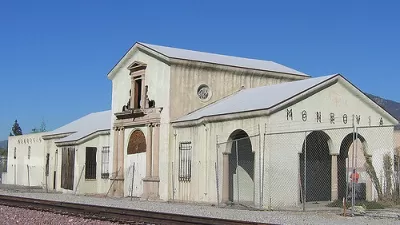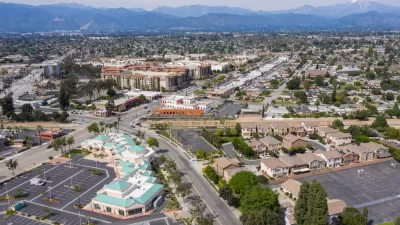All Los Angeles County Metropolitan Transportation Authority (Metro) Gold Line riders will enjoy complimentary rides on Saturday to celebrate the opening of the $1 billion, 11.5-mile Gold Line Foothill Extension in the San Gabriel Valley.
"Metro will provide complimentary rides on the entire Metro Gold Line light rail system Saturday, March 5, according to the South Pasadena Review. "Free rides will begin at 12 noon and will last until midnight."
The opening ceremony will be held at the Duarte/City of Hope Station. "This will probably be one of the biggest events in our city’s history and also in the San Gabriel Valley," Duarte Councilwoman Margaret Finlay told the San Gabriel Valley Tribune.
"It is one of six stations serving the new extension that is expected to carry around 10,000 passengers a day soon after the line opens," writes San Gabriel Valley Tribune reporter Steve Scauzillo in a series of articles for local media. "The other five stations are: Arcadia, Monrovia, Irwindale, Azusa (downtown) and Azusa Pacific University/Citrus College."
"With the foothill extension, the Gold Line will be 31 miles long, the longest light-rail in Los Angeles County, said Dave Sotero, a spokesman for Metro, the Los Angeles County Metropolitan Transportation Authority," writes Scauzillo in an article titled, "Everything you need to know about the new Gold Line Foothill Extension."
The future of Southern California transportation on display Saturday
"[T]his isn’t just about transit in the San Gabriel Valley," asserts a compelling Los Angeles Daily News editorial on the opening of the extension. "For mass transportation in Southern California, this, as with every new puzzle piece put in place, is more about the future than it is about the present."
The editorial advocates for more extensions of the Gold Line "farther east into San Bernardino County, reaching Ontario International Airport and someday beyond...because the only way a regional rail transit system really works is for it to be so woven into the geography that there isn’t any question about the fact of connectivity..."
The Gold Line's ridership has been on the rise, writes Scauzillo:
The first Gold Line opened less two years after the 9/11 terror attacks. It gradually grew in popularity, starting at 11,000, then 22,000 and 46,608 riders per day on weekdays as of January of this year, according to the latest figures available from Metro. People who use it to get to and from work in Los Angeles. Some connect to the Metro subways, the Red and Purple Lines that go to downtown and Hollywood.
The Gold Line should provide an alternative to driving on the congested 210 freeway for many commuters, particularly for the 25,000 students attending Citrus College and Azusa Pacific University. The extension took five years to construct.
Hat tip to Metro Transportation Library.
FULL STORY: Metro offers Free Rides on Gold Line Saturday

Planetizen Federal Action Tracker
A weekly monitor of how Trump’s orders and actions are impacting planners and planning in America.

Maui's Vacation Rental Debate Turns Ugly
Verbal attacks, misinformation campaigns and fistfights plague a high-stakes debate to convert thousands of vacation rentals into long-term housing.

Restaurant Patios Were a Pandemic Win — Why Were They so Hard to Keep?
Social distancing requirements and changes in travel patterns prompted cities to pilot new uses for street and sidewalk space. Then it got complicated.

In California Battle of Housing vs. Environment, Housing Just Won
A new state law significantly limits the power of CEQA, an environmental review law that served as a powerful tool for blocking new development.

Boulder Eliminates Parking Minimums Citywide
Officials estimate the cost of building a single underground parking space at up to $100,000.

Orange County, Florida Adopts Largest US “Sprawl Repair” Code
The ‘Orange Code’ seeks to rectify decades of sprawl-inducing, car-oriented development.
Urban Design for Planners 1: Software Tools
This six-course series explores essential urban design concepts using open source software and equips planners with the tools they need to participate fully in the urban design process.
Planning for Universal Design
Learn the tools for implementing Universal Design in planning regulations.
Heyer Gruel & Associates PA
JM Goldson LLC
Custer County Colorado
City of Camden Redevelopment Agency
City of Astoria
Transportation Research & Education Center (TREC) at Portland State University
Jefferson Parish Government
Camden Redevelopment Agency
City of Claremont





























